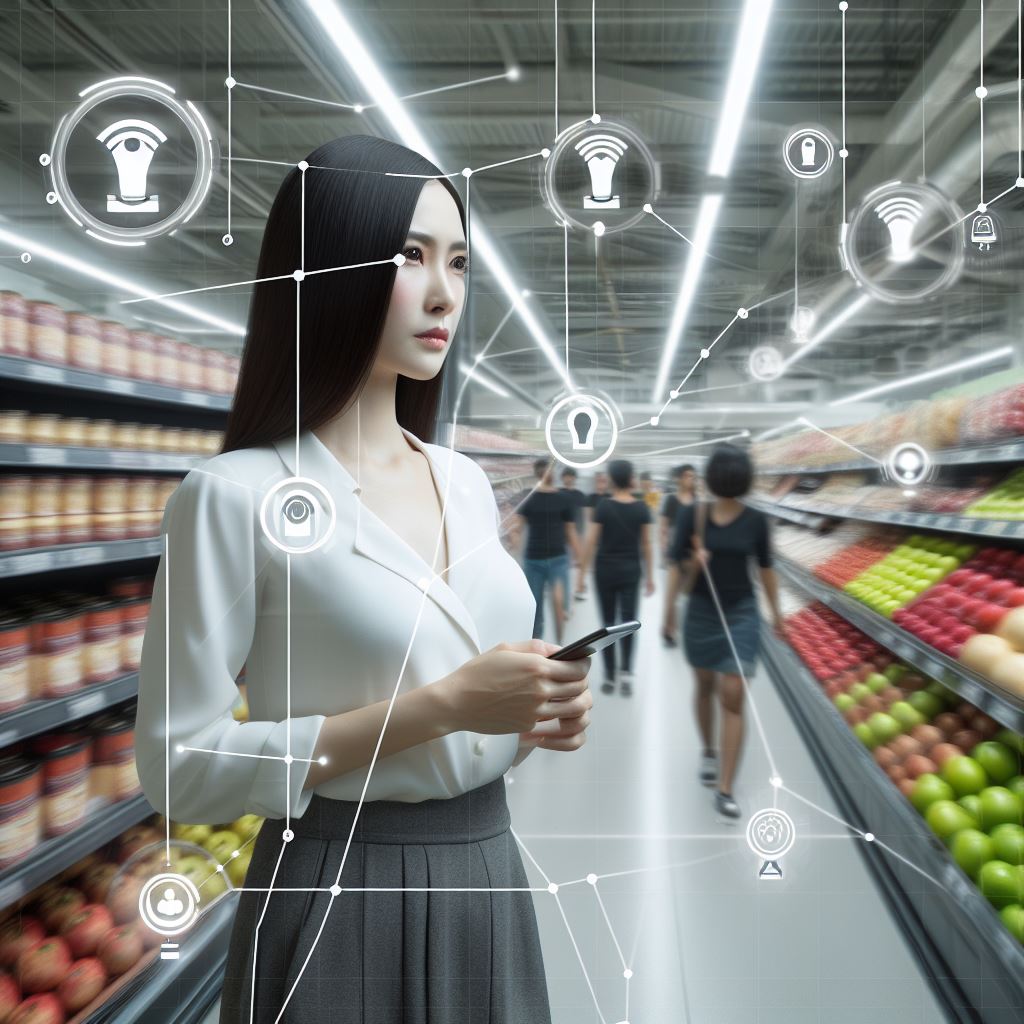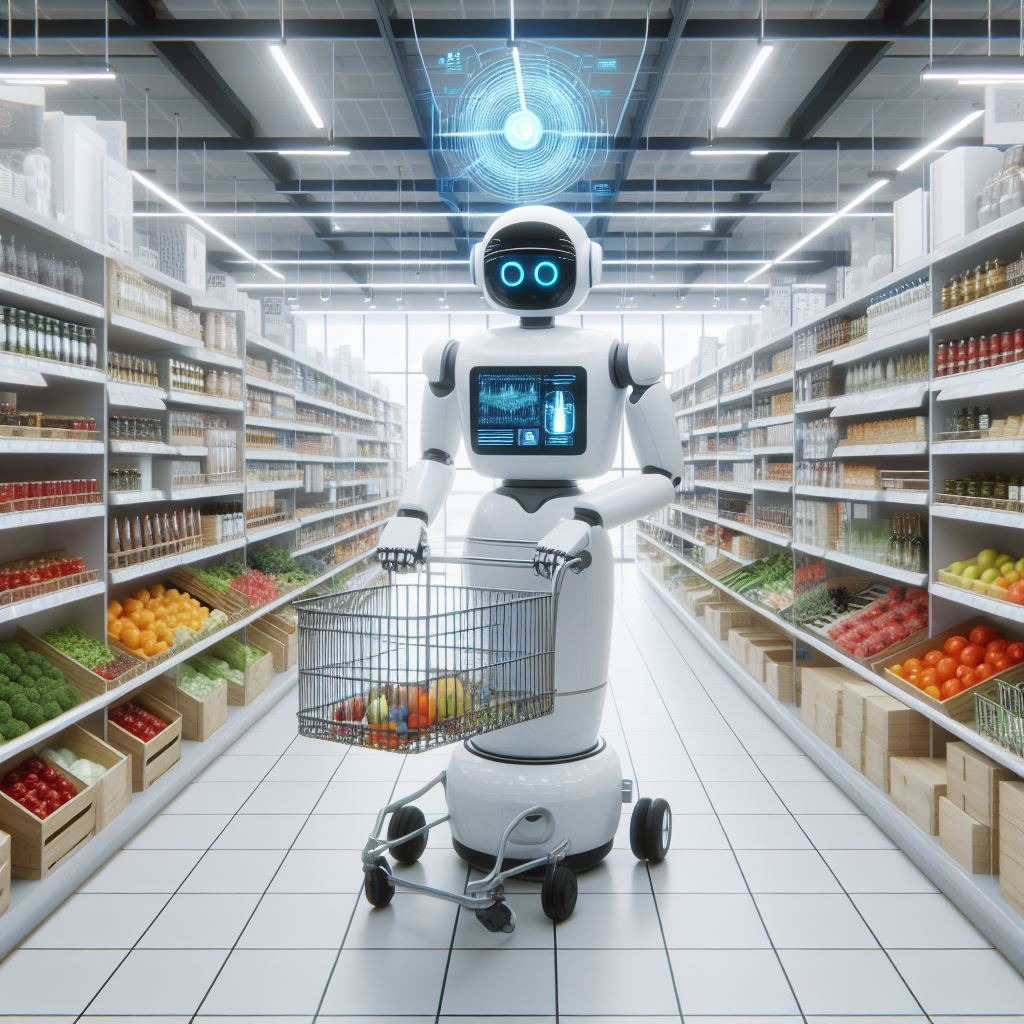Due to its close proximity and 11pm closing time, GIANT has been my go-to supermarket for many late night urgent purchases. From kiddo medications to a spice rack replacement, those meanderings around the vacant aisles at 10:45pm have allowed for quick and easy purchases. And its an ideal time of the day to experience the eerie advancement in tech and marketing. But, GIANT isn’t my choice grocery store—it’s just the only one that’s open.
Before I dive into where I’d prefer to go, here’s a breakdown of how supermarkets are increasingly leveraging AI to track and understand customer behavior.

1. Loyalty Programs
“Your GIANT Card has been accepted!” says the self checkout voice with such enthusiasm every time I bang that barcode down. Are there days when I wouldn’t be accepted based on what I was wearing? Don’t know. But these cards capture data about purchase history, frequency of visit, and preferred products with your name. Wouldn’t you like to see how many things you’ve purchased?
If you buy alcohol at GIANT, they scan your driver’s license, acquiring even further information. This is not a state law, but a store policy designed to show “due diligence”.
2. Cameras and Sensors
Depending on the store, camera systems and sensors are installed throughout stores to monitor customer movement and flow patterns. Of course, I shop aimlessly and am likely skewing their data. My wife and I can never shop together. I roam about as if I was at a carnival eating funnel cake.
Some stores can track shelf interactions, pinpointing how often customers pick up items and put them back. Others record checkout lines for peak hours.
AI can then analyze the video data to optimize store layout, improve product placement, and enhance the overall shopping experience.
3. Facial Recognition
Some supermarkets use facial recognition to identify repeat customers and tailor marketing messages and offers based on past behavior.
Of course, it can also enhance security by identifying shoplifters.
4. Mobile Apps and Beacons
Supermarket apps, often linked to loyalty programs, track customers via their smartphones. They can send personalized offers and notifications based on location within the store and collect data on in-app activity and preferences.
They can also use geofencing and beacons to understand movement patterns and engagement with in-store promotions.
5. Online Shopping
For supermarkets with online platforms, AI and analytics software can track browsing history, search queries, online purchase behavior, abandoned carts and more. I once had to run out of GIANT for an emergency with a cart full of nonperishables, leaving the stock team a lot of work, and leaving an outlier blip in their data.
This information also helps in personalizing online shopping experiences and driving targeted marketing campaigns.
6. Smart Carts and Self-Checkout Systems
Smart shopping carts, like the ones at Amazon Fresh, are equipped with sensors and scanners that can track items placed in the cart in real-time, along with shopping routes taken by customers and time spent in different aisles. (I know of two Amazon Fresh stores that have been vacant for over a year and never completed. I’ll see one someday.)
Self-checkout systems similarly gather data on purchased items and transaction times, offering insights into shopping patterns and preferences.
7. Customer Feedback and Sentiment Analysis
AI analyzes customer feedback from various sources, including surveys, reviews, social media interactions and customer service interactions. AI is used to gauge customer sentiment, identify common issues, and improve service quality.
8. Product Inventory and Stock Management
AI systems track inventory levels and sales data to:
- Predict demand and optimize stock levels
- Reduce out-of-stock situations and overstock
- Inform dynamic pricing strategies
9. Digital Signage and Personalized Advertising
AI-powered digital signage can change content based on time of day, customer demographics detected by in-store cameras, and real-time data on store traffic and sales.
These methods collectively enable supermarkets to create a highly personalized shopping experience, optimize operations, and drive sales while maintaining efficient inventory management.
One thing that I always wondered about is if particular songs drive cart content. Does a hit Olivia Rodrigo song drive impulse purchases? Does a sad Phil Collins song drive literal cart abandonment and have customers darting for the exit?
10 . Customer Grading
Some supermarkets use Recency, Frequency, Value (RFV) analysis to examine transactional behavior of customers and score them using a combination of how often they shop, how many items they purchase and how much they spend.

Supermarket Option Overload
It’s a golden age for supermarket options, especially in the suburbs. In the outskirts of Philly, I am about 15 minutes or less from all of these thirteen big chain stores:
- GIANT
- Mom’s Organic Market
- ALDI
- Sprouts Farmers Market
- Whole Foods
- The Fresh Grocer
- ACME
- Amazon Fresh
- Trader Joe’s
- Weaver’s Way Co-Op
- Target
- Sam’s Club
- Walmart
Also, I have these local, family owned neighborhood markets nearby:
- George’s Market At Dreshertown
- O’Neill’s Food Market
Each of the stores above has a wide list of pros and cons, and are better suited for certain purchases over others. It’s really about what your goals are as a consumer. I personally could never shop at Target, Sam’s Club or Walmart for groceries. It just seems too hectic in the parking lot alone, too massive of a store to explore, and somehow depressing.
Mom’s Organic Market has been my favorite. Here’s a breakdown why:
Pros:
- Low volume foot traffic. Sometimes I’m one in ten customers there! I often wonder how this place stays in business.
- Soothing jazz and classical music is played.
- There’s free samplings of great coffee.
- You can recycle electronics, batteries, old Christmas lights, denim and lots of other household items.
- Produce is from area farms, such as Lancaster Farm Fresh Cooperative. (You won’t get a carton of strawberries that gets moldy overnight.)
- They have a banned food ingredient list and refuse to sell products that feature these ingredients. They list them out on their website.
- At the one I go to, there are about 25 pinball machines located near checkout that will take you back to a simpler time.
- If you join a local CSA, they house the pickup boxes.
- The staff really seem to enjoy working there and are friendly.
Cons:
- It’s on the pricier side, but they do have some inexpensive brands.
- There are zero overhead aisle signs that indicate what’s in the aisle. But the store is so intuitive and compact, it’s barely a problem.
- If you like to get cleaning supplies, paper towels, toilet paper, toiletries and other non-consumable items when you shop, they have options but they are minimal and super expensive. Same thing with pet food. You’ll have to go elsewhere. Mom’s is more about getting items for that perfect meal you’re planning tonight.
- They charge $0.25 for bags if you don’t bring your own.
- No bakery.
Every store has their perks.
- Whole Foods has the Amazon Return Center and the best seafood / meats.
- The Fresh Grocer has dim, tranquil lighting and has the similar vibe of a Starbucks. It also seems to sell brands with the most beautiful packaging design.
- Trader Joe’s has a wealth of premade meals and endless snacks / desserts, allowing you to somehow endure their hectic parking lots.
But, back to GIANT. It’s not my first choice— it’s just the sole option late at night. When you enter, usually with a wobbly cart, you’re greeted with intense fluorescent light. This white brilliance showers over stacks of beer cases, wine, and a host of glistening chicken wings. To the side is often the latest in holiday offerings, like fireworks galore and baked goods. It all screams, “Let’s get drunk and eat some blueberry pie while firing off Roman Candles!”
Sure, it has a kiosk style Starbucks to the other side, but it doesn’t produce that Starbucks feeling, like the boisterous ones with Miles Davis blaring, where the atmosphere mirrors the energy of a Venti buzz and somehow allows you to focus on writing that novel. Maybe there’s a cheesy gas fireplace nearby, but it adds to the aesthetic. At GIANT, there’s a Wi-Fi lounge with some booths, but most just take their cups to go.
Late at night, there’s usually just one human self checkout worker, and I usually feel guilty for not going that route. At self checkout, the “life guard” worker that gazes upon the twelve machines is ready to help, but always terribly bored looking. I always think these employees are staring me down, judging my organic Honeycrisp apple purchase, wondering if I’m trying to cheat the quantity.
Marty, the GIANT robot that’s trained to find aisle hazards, is often stuck, low on batteries and bumping into a corner. In the age of AI, this thing has the qualities of a toy robot from the 80s, but is super amusing for babies and toddlers.
When I exit, I usually stare at the beer section and try to remember how many ounces that you can buy at at time. I recollect having to bring beer back to my car, then come back in and buy more, and repeat the process for a party.
In the dark parking lot, a solar powered “lot cop”, a mobile surveillance unit, flashes its blue light light mounted on a mast. A recording plays from a speaker about how the lot is continually scanned for your safety. I’m usually parked next to the Volta “free-to-use” electric vehicle charging stations. These feature a large iPhone looking screen playing commercials about RXBARs and anti-age lotions. A woman splashes her face with water in slow motion with bright and crisp high def precision, but I don’t look for long as tunnel vision sets in and any lot criminals could have me cornered. I retreat to my 17-year-old Hyundai and drive off quickly, playing a CD, and eating the secret day-old donut I bought for myself.
Sources:
https://www.leafio.ai/blog/supermarket-technology-trends-with-ai-review